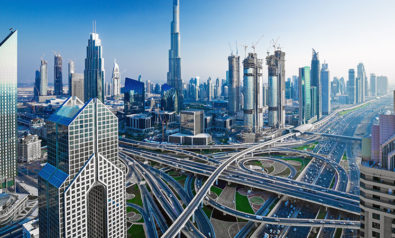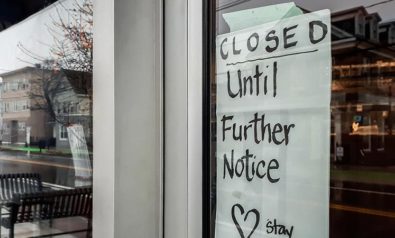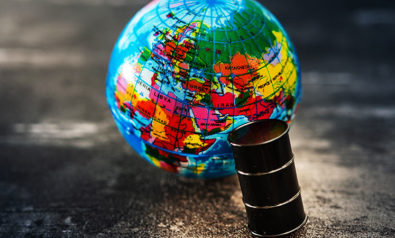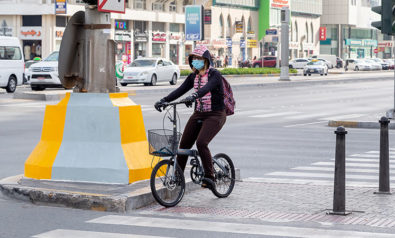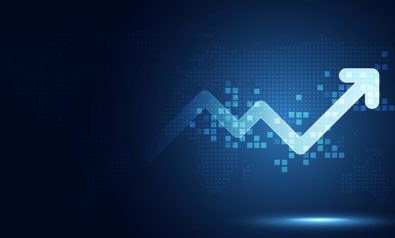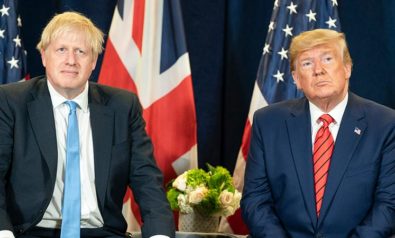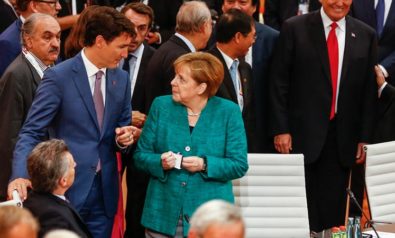Editor’s Note: These are unprecedented times. A global pandemic has changed life as we know it. In recent months, Fair Observer has examined the crisis through political, economic and social lenses, publishing articles from around the world. The result is three 360° series that we urge you to read. You too can get involved in the conversation by sending us your perspective.
On April 21, the price of West Texas Intermediate (WTI), the benchmark for US oil, fell below zero. This has never happened before. On June 25, natural gas prices fell to a 25-year low. Thanks to the COVID-19 pandemic, much of the world has been under lockdown. Very few car engines are humming. Most planes are grounded. Hence, demand for energy has crashed and storage hubs are filled to the brim.
COVID-19 has rewritten the rules of the economy in the blink of an eye. On March 13, US President Donald Trump declared a national emergency. By the beginning of June, more than 42 million Americans — over a quarter of the country’s workforce — had filed for unemployment benefits, and the unemployment rate had shot up from 3.8% in February to 14.4% in April or, by some estimates, as high as 23.6%. If that figure is correct, it came precipitously close to the Great Depression, which peaked at 24.9% unemployment in 1933.
Scroll down to read more in this 360° series
Click here to read our full coverage on the coronavirus pandemic
This number does not include many millions of gig workers and temporary employees. As per the International Labour Organization, there are 1.6 billion workers in the informal economy. Nearly half of the global workforce faces the risk of losing its livelihoods. Around the world, hundreds of millions are out of work as the Great Lockdown has brought the global economy to a grinding halt. Already in April, the UN warned that 195 million jobs may be lost globally in the next three months alone, adding to the 190 million who were unemployed before COVID-19 hit.
The Economic Impact of COVID-19
Since 1991, the global economy has relied on the relatively free flow of goods, services and people. COVID-19 has disrupted that flow, triggering a decline in demand and a slump in supply. Consequently, unemployment has skyrocketed. Governments have stepped in to provide relief measures. Since a shrinking economy has lowered tax collections, relief measures have been funded by ballooning deficits. In turn, these have led debt levels to rise dangerously.
For the first time since the 1929 Wall Street Crash, advanced emerging market and developing economies are in recession. The International Monetary Fund projects per capita income to shrink for over 170 countries. COVID-19 has eviscerated industries like tourism, travel and hospitality. Sports and entertainment have stopped too. Even the Olympics have been called off. The last time this happened was during World War II. But unlike wartime days, manufacturing has cratered. Simultaneously, consumption has crashed.
As is invariably the case, poor countries have been hit hardest. They rely on daily wages to survive. Now, those have stopped. Many have run out of their meager savings. They are either living in hunger or fear running out of food. As per Oxfam, the pandemic “could push over half a billion people into poverty” in developing countries. Even middle-class families in advanced economies are feeling the pinch.
In April, markets were down by 35%, credit markets had seized up, and credit spreads had shot up to 2008 levels. Since then, stock markets have rebounded to some degree thanks to historic stimulus packages, but credit defaults are on the rise. Bankruptcies are becoming more frequent, ruining both debtors and creditors. In response, central banks have thrown in everything and the kitchen sink in response to the crisis. They have announced zero or negative interest rates and doubled down on quantitative easing. They have engaged in credit easing, purchasing private assets to backstop banks, non-banks, money market funds and even large corporations.
While central banks have eased monetary policy, governments have used fiscal policy to ease the economic shock. They have announced stimulus measures that include unprecedented income support. They have promised to pay a large percentage of people’s wages, made direct cash transfers and tried to bail out key industries.
In March, the US enacted the largest fiscal stimulus package in its history. It cost $2 trillion, about 10% of its GDP. In less than a month, it has passed an interim stimulus package worth $484 billion to fund small businesses and hospitals. China, Canada, Germany, France and the UK have all announced bailouts of their own. Spain, one of the worst-affected countries in Europe, even toyed with the idea of introducing a universal basic income to stay in place past the crisis. As a result, both deficits and debt have gone through the roof.
Why Does COVID-19’s Economic Impact Matter?
COVID-19 will change the global economy in a similar manner as the Great Depression, World War II and the collapse of the Soviet Union did in the past.
First, COVID-19 is precipitating a financial crisis. No model of future economic activity could have factored in a pandemic of this sort. Many people will not be able to pay their rent. Their landlords will then struggle to pay their mortgage. When enough landlords default, banks could find themselves in trouble. Many complicated financial instruments will most certainly lose value. Hedge funds, private equity shops and venture capitalists are already laying off staff or cutting their pay.
Second, COVID-19 is increasing debt dramatically. Even before this pandemic, leading financial analysts wondered if there was a “government bond bubble.” In 2019, global debt topped $255 trillion, reaching 322% of the global GDP. Now, this figure will be much higher. Developing countries are already facing a debt crisis as are affluent economies like Dubai and Italy. This crisis will envelop many more countries.
Third, COVID-19 is challenging the global economy that took off after the Soviet Union’s collapse in 1991. The disruption in supply chains has led to shortages of medicines, personal protective equipment and other essential items. There is a shift in sentiment to move production closer to home. Trade was slowing down before the pandemic thanks to rising protectionism and trade wars. Now, national security and public health concerns add “momentum to the deglobalization trend.”
Fourth, COVID-19 is weakening markets and strengthening governments. For much of the last few decades, markets have been ascendant. Governments have retreated from intervening in economies. That changed somewhat in the aftermath of the Great Recession. Now, the transformation is complete. Governments are once again taking over the commanding heights of the economy and Keynesian policies are back.
Finally, COVID-19 is exponentially increasing inequality and putting it firmly into the spotlight. Many are questioning why hedge fund managers and footballers make so much money for just buying and selling assets, while researchers and nurses who work as hard, if not harder, make much less. Others are wondering why the rich pay less tax and ask for bailouts every 10 years.
It is unclear as to what sort of economy will emerge after the COVID-19 pandemic. However, it is crystal clear that things will not revert to the pre-pandemic status quo. As Bob Dylan once sang, “the times they are a-changin’.”
The views expressed in this article are the author’s own and do not necessarily reflect Fair Observer’s editorial policy.
For more than 10 years, Fair Observer has been free, fair and independent. No billionaire owns us, no advertisers control us. We are a reader-supported nonprofit. Unlike many other publications, we keep our content free for readers regardless of where they live or whether they can afford to pay. We have no paywalls and no ads.
In the post-truth era of fake news, echo chambers and filter bubbles, we publish a plurality of perspectives from around the world. Anyone can publish with us, but everyone goes through a rigorous editorial process. So, you get fact-checked, well-reasoned content instead of noise.
We publish 2,500+ voices from 90+ countries. We also conduct education and training programs on subjects ranging from digital media and journalism to writing and critical thinking. This doesn’t come cheap. Servers, editors, trainers and web developers cost money.
Please consider supporting us on a regular basis as a recurring donor or a sustaining member.
Support Fair Observer
We rely on your support for our independence, diversity and quality.
Will you support FO’s journalism?
We rely on your support for our independence, diversity and quality.



